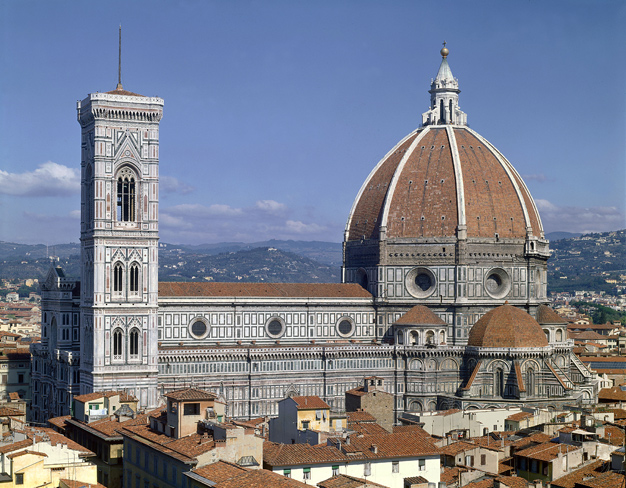Most commonly used scale in architecture is based on human scale. Since 1487, when the Vitruvian man was invented by Leonado Da Vinci, had been widely used by classical and renaissance architects. One of the renaissance architects,Filippo Brunelleschi who bring classical elements to his attention, proportion, order, symmetry, arrangement are very vital element used in his architectures. In other words, he bring history to his use. However, Brunelleschi not just simply design a architecture like a Classical architecture. He chanlleging it with technology and new form. As shown in Santa Maria del Fiore is the first dome structure constructed in that period.
On the other hand, Le Corbusier introduce modular man to the modernism. The adaptation of the vitrue man in to this modular man one can see the transformation change through time, from the classical element where massive ornamentation and decorative facade to modernism where clear surface, and from follow its function. Even though he stressed that modernism is neglect all the classical element and start from zero.
Even though Le corbusier try so hard to drive away from all the ornaments on the facade, because he want to stop separation in level of people, he believe that every body should be equal. He still refer to the vituious man and create a modular man which use to make proportion and symmetry .
Opposite to Robert Venturi, the post modernist, where he urges that modernism is not satisfy human needs and it stucked with all the phrase like less it more and all the principle created which are the limitation to the architecture. And it suggested that the architecture should be read in many dimension ann have many layers for the reader to interpreted and create complexity and contradiction which make a value to the architectures which he deems to be efficient, the post modernism. He used the history to go against within itself. As we can see in his article like complexity and contradiction. Another example of how he got away with all the proportion and symmetry of form, and pay more attention to the expressiveness of the building is shown in the Duck house.
 |
| Santa Maria del Fiore : DOME |
 |
| Unité d'Habitation de Marseille (Cité Radieuse), Marseille, France (Le Corbusier, 1952) |
 |
| Duck House: Robert Venturi |


No comments:
Post a Comment